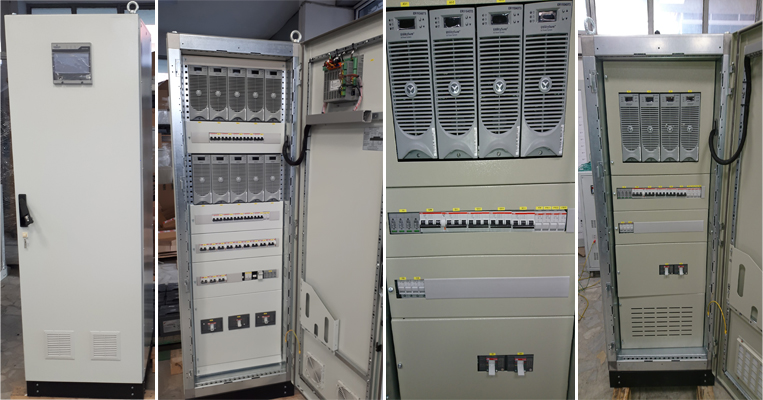Switch Mode Battery Charger rectifiers; It is also called Mosfet rectifier, IGBT Rectifier, Transformerless rectifier. It is used in many sectors due to its small size and light structure. It is designed with the latest technology in mind. It has overcurrent, overheat, low and high voltage protection. It has ease of use with its simple structure.
Marine type SMPS rectifiers, with their special cabin design, are very resistant to corrosion caused by the salty and humid weather conditions of the marine environment. Again, control cards and ports have a very long service life as they are protected in accordance with these harsh conditions.
Mechanical assembly points and material structure have been made resistant by taking into account the vibration on ships.
It can be safely operated from the mains or generator and used as a battery charging and feeding DC power source.
Recently, it has been determined that the information presented as a marketing technique in the market that Switch mode Rectifiers are 40% economical is incorrect. Because it provides only 2% savings compared to transformer rectifiers. The information presented as 40% is not savings, but CosQ value.
Advantage: It has a quality DC output signal. Ripple value is below 0.5%. Since it is small in size and lightweight, it is easy to carry.
Disadvantage: Isolated transformer type can easily malfunction due to its more sensitive structure compared to Thyristor-controlled rectifiers, and it is more difficult to eliminate the malfunction due to its complex structure.
General Features
➤ Models with and without LCD
➤ Modbus communication feature
➤ Ease of use
➤ Lightweight structure, small dimensions
➤ Earth leakage protection
➤ DC high protection
➤ DC low protection
➤ Overcurrent protection
➤ Overheat protection
➤ Quiet operation, environmentally friendly design
➤ Battery reverse protection
➤ Battery powered and batteryless operation feature
➤ Ability to work in parallel
➤ History fault information record
➤ 12/24/48/110/220 VDC output voltage
➤ 5-500 ADC output current

